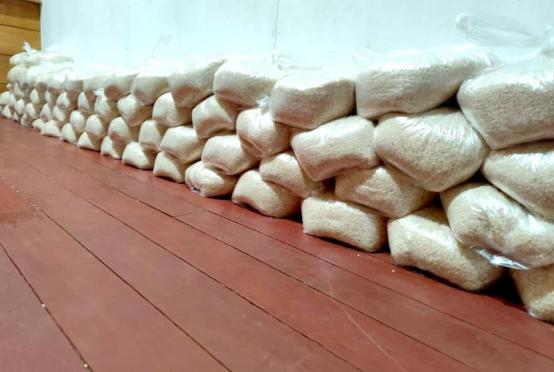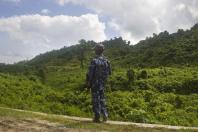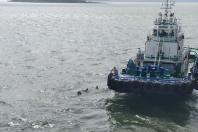
Kathmandu (The Kathmandu Post) - All the roads—including major national highways—which traverse through forest areas and protected parks of the country will have to maintain a set of standards for ensuring the safety of wildlife, according to a new model developed for infrastructure projects.
The model has been developed by Department of National Park and Wildlife Conservation, the main government agency that manages protected areas and protects the wildlife in these parks, with other infrastructure-related agencies.
According to Man Bahadur Khadka, director general with the department, the model is designed so as to make country’s roads and other infrastructures wildlife friendly.
“After long, continued coordination among infrastructure related agencies like Department of Roads, Department of Irrigation, Department of Railways, Nepal Electricity Authority and other non-governmental stakeholders, the model has been brought to effect to ensure safer and easier movement of wildlife along all the roads passing via forest and protected parks,” Khadka told the Post.
Massive roadkill of wildlife along the highways and side roads that passes via protected areas of the southern plains has long been a challenge for the protecting country’s valuable wildlife.
An estimated 40 per cent of total wildlife death is attributed to road accidents along the East-West Highway, according to the department’s statistics. Even large animals such as tigers have been killed in road accidents along the national highway’s stretch that passes through Banke National Park and Bardiya National Park.
In December 2016, a male tiger from Bardiya National Park was killed on the spot after being hit by a speeding vehicle along the East-West Highway. This year alone, two tigers from Parsa National Park got injured after being hit by a speeding vehicle, displaying how vehicle-speeding highways have become a growing threat against the country’s conservation efforts.
“Having wildlife friendly infrastructures is also safer for public and properties that get damaged during such accidents involving wildlife,” added Khadka.
The model, which has been prepared following practices of developed countries and in consultation with local wildlife experts and engineers, has been handed over to the Department of Roads.
The wildlife protection department has also drafted a separate document, the Green Infrastructure Working Procedures, which will guide the construction of road projects along the areas with wildlife presence. The document is going through its final revision at the Ministry of Forest and Environment.
“Once the document will be finalised and approved, it will get the status of a national policy and every infrastructure along the protected areas should prioritise the safety of wildlife and maintain stipulated standards,” said Khadka. “For example, heights for the passage made for elephants, tigers, rhinos and other animals will be mentioned in the document. Likewise, crossings, underpass, overpass and other designs for other animals as per the area will also be identified.”
Attention will also be given to arboreal animals like squirrels, langoors, monkeys, mongooses--which spend time both on the ground and on tree canopies.
Currently, four underpasses have been constructed along the Naryanghat-Muglin section for safer movement of wild animals in Chitwan National Park. Stakeholders however have criticised the construction work, as it does not facilitate the movement of larger animals like elephants and rhinos.
According to Khadka, even though larger animals cannot pass through the underpass, small mammals have been using the facility as shown in camera traps.
“Forest and environment ministry has merged into one body, and that makes it easier for implementing this new design,” said Khadka. “When the detailed report of the project will be completed, and if the environmental impact assessment report points out movement of wildlife along the area, the project must follow wildlife safety guidelines.
http://kathmandupost.ekantipur.com/news/2019-04-21/government-comes-up-w...















